How to embed album art in iTunes
March 31, 2021 in album art by Dan Gravell
 Interoperability. That’s what it’s all about when you have a home music network. Sooner or later you’ll add a device - a new hi-fi, phone, car stereo, whatever… you’ll copy a music library over from iTunes, and… your beautiful artwork is missing.
Interoperability. That’s what it’s all about when you have a home music network. Sooner or later you’ll add a device - a new hi-fi, phone, car stereo, whatever… you’ll copy a music library over from iTunes, and… your beautiful artwork is missing.
This is important! Your artwork is useful for finding the music you want to play and it’s great to have it there while you’re listening. After all, the album artwork is a part of the overall artistic work that makes up an album.
So… why is the artwork missing? If you can see it in iTunes, it’s there, right? Why can’t you see it when you use another piece of software or hardware?
Here’s the problem: iTunes’ Get Album Artwork option only stores the artwork in iTunes’ own database, not in your music files. This means: if other software doesn’t have special code to look inside the iTunes database, it doesn’t know of the artwork’s existence.
I’ll demonstrate the problem to make this more practical. Here’s iTunes, with a newly imported album, Bomb the Bass’s Enter the Dragon (the first album I purchased, in case you were wondering!).
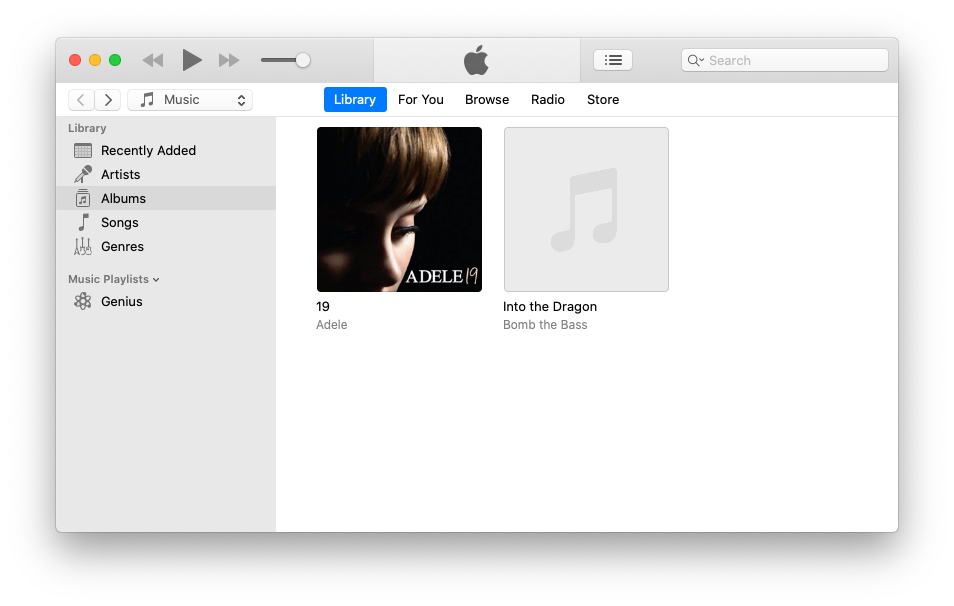
There’s no artwork, so I try Get Album Artwork and…
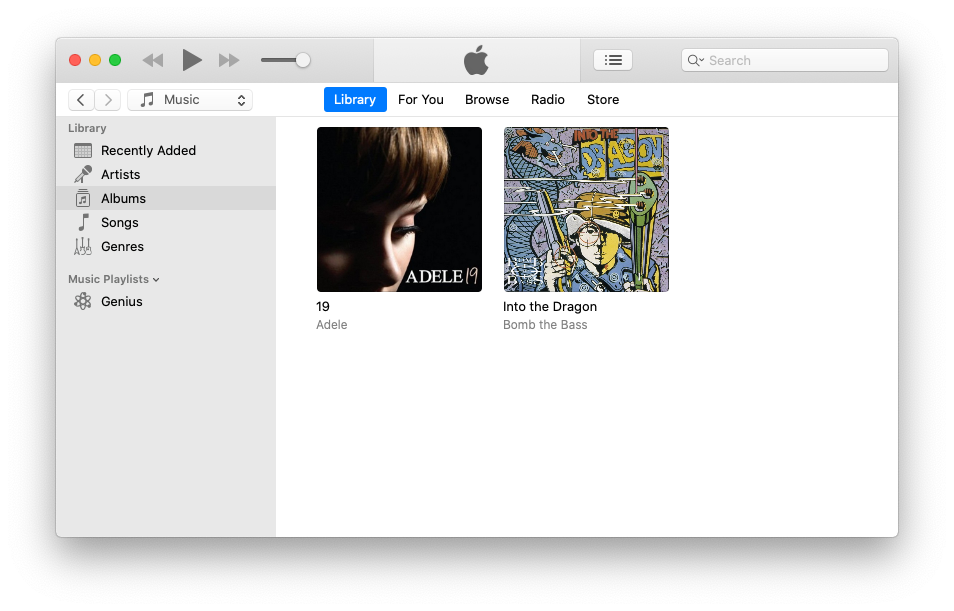
… it worked! But what if I open the files in a different music player? Here, I try foobar2000:
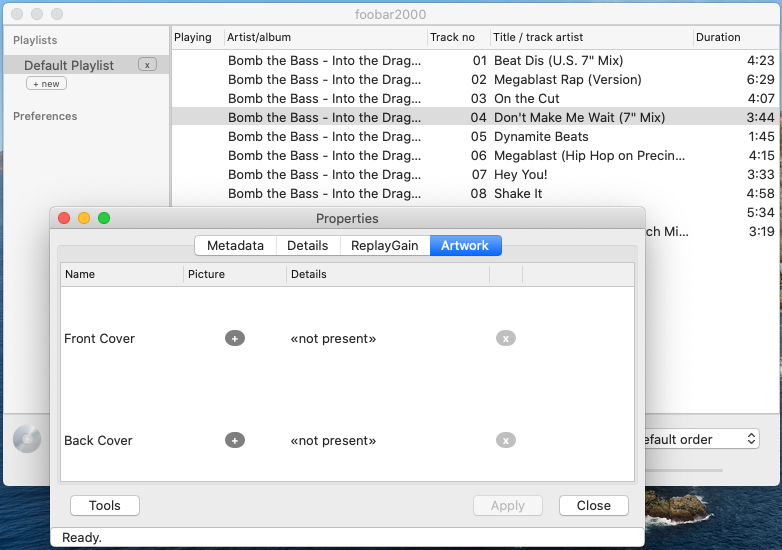
Oh - gaps where the art should be. This is a general problem which affects all software that accesses iTunes files. It doesn’t matter if it’s another piece of software on your Mac, a player on your phone, a hi-fi controller, a cloud based music locker… none of those things knows how to look inside iTunes’ database, so the artwork cannot be seen.
I should add one thing: if you rip a CD with iTunes, this will embed the artwork into your library so other software can see it. It’s odd that Apple chose to embed the artwork with one option and not the other… but there you go. I’m just making that clear, because if you have ripped CDs and read the above you might be forgiven for wondering what I’m going on about - all your artwork displays fine!
So what’s the solution?
The solution is to store the album art inside your library, not just iTunes.
There are two main ways to store artwork in a music library that are supported by other software.
The first, and most practical way, is to embed the artwork inside the music files themselves.
The second is to store a separate image file with a well-known name that other software will know to look for. Common choices are cover.jpg or folder.jpg.
But how do you move the art from iTunes’ database into your library? Well, the answer is that the best way depends on your computer. First I’ll address doing it from a Mac, then I’ll move onto Windows.
macOS - using Doug’s Script(s)!
Who’s Doug and what does he have to do with my artwork?
Don’t worry - Doug Adams is a credible guy who, amongst other things, hosts the Next Track podcast. Before that he set up Doug’s AppleScripts. An AppleScript is a small bit of computer code that can run on macOS computers. You can use it to automate tasks… like embedding artwork. Doug’s AppleScripts is a collection of AppleScripts for managing many different media-related tasks on macOS computers.
The AppleScript I refer most people to is Re-Embed Artwork. This link takes you to the iTunes version - note there’s also a Music.app version which obviously will not work on iTunes.
Here’s how to use the Re-Embed Artwork script to embed artwork from iTunes into your music files:
- To start, in the iTunes Menu, click iTunes > Preferences > Advanced and check Share iTunes Library XML with other applications. Click OK.
- On the Re-Embed Artwork page click Download. Click to Allow downloads from dougscripts.com in case you are asked.
-
From your Downloads, click the newly downloaded
Re-Embed Artwork v2.7.dmgto open it. You’ll get a really useful popup which takes you through the steps: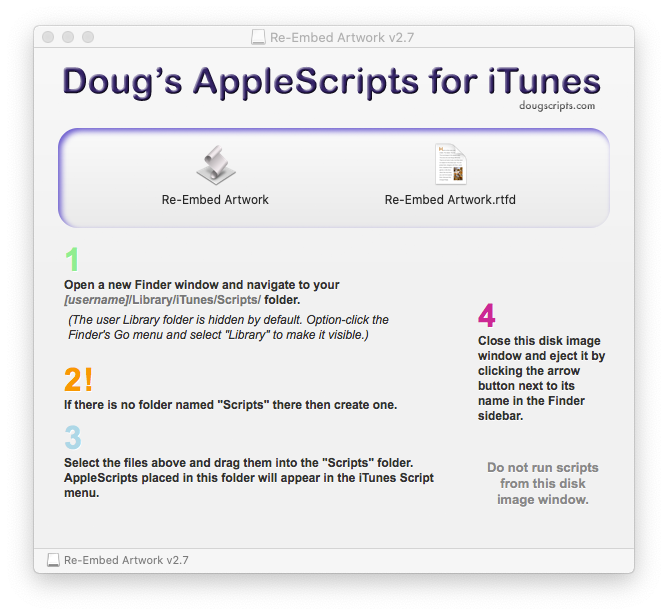
- Click the Spotlight icon in the Menu bar at the top-right. Type ~/Library and press Enter
- Look for a folder called iTunes. If there isn’t one, create it. Double click on it to go into the iTunes folder.
- Look for a folder called Scripts. If there isn’t one, create it. Double click on it to go into the Scripts folder.
-
Drag the Re-Embed Artwork script from the download into the newly created Scripts folder (you might prefer to do copy-and-paste).
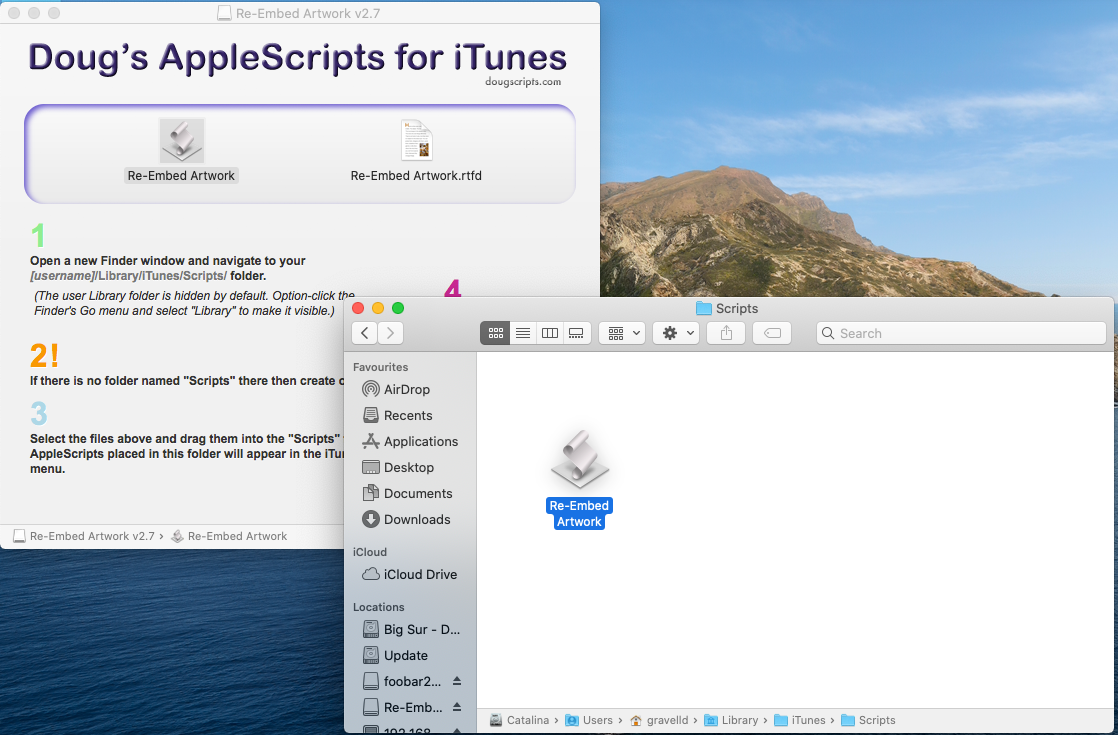
- Close the Re-Embed Artwork download. If you now check back in iTunes you’ll see a new script option has appeared in the Menu bar and Re-Embed Album Artwork inside. Don’t click it yet!
- Select the album for which you want to embed artwork. You can select multiple. If you select none, the entire collection is re-embedded, which might not be what you want.
-
Click the new script icon in the Menu bar, then Re-Embed Album Artwork. If challenged, confirm you want to run the script.
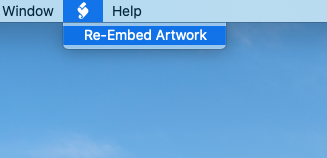
And that’s it! After a period while the embedding takes place, the artwork should be embedded. Now, in foobar2000…
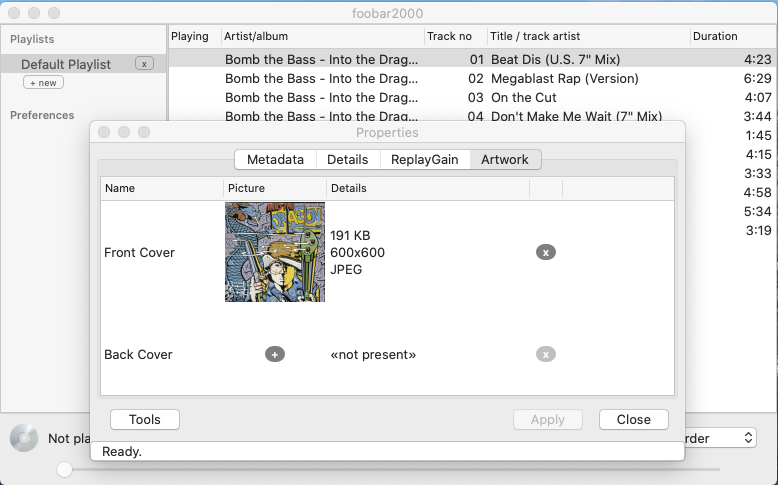
Hooray! This artwork can now be shared with other apps.
Windows - using SamSoft VB scripts
Windows doesn’t support AppleScript, so another solution is required. Instead, we can use a VisualBasic script.
- Go to http://samsoft.org.uk/iTunes/scripts.asp and click EmbediTunesArt to download the script.
- In iTunes, select the album for which you want artwork embedded. If you don’t select one, all albums will be affected, which is probably not what you want.
- Go to the downloaded script (by default it’s probably in your Downloads folder).
- Right click it, click Run.
- If you are challenged with a Security Warning click Open.
-
The script should confirm what it’s about to do. It should confirm how many tracks will be affected:
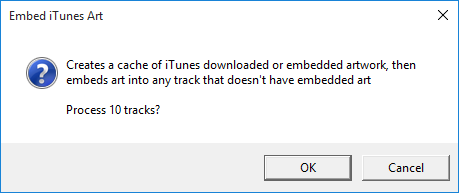
-
Click OK. The script will not show any type of progress indicator, but after a few seconds:
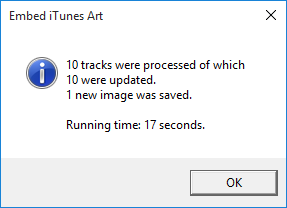
And again, that’s all there is to it! The artwork shows up, this time in Mp3tag:
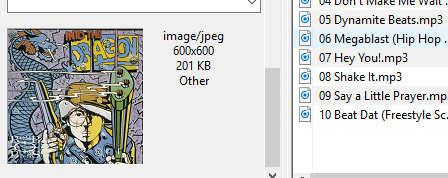
Hopefully this has helped you embed iTunes artwork into your music files. Let me know in the comments if you have any other questions, or maybe a better way to do it!
Photo by Marian Kroell on Unsplash

